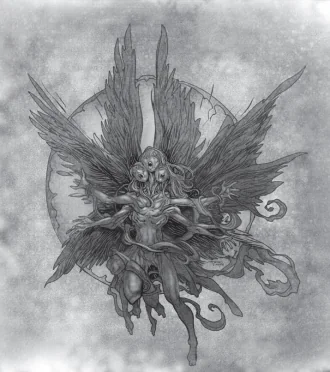The Truth About Biblically Accurate Angels: Are Angels Really Scary?
Discover the truth about biblically accurate angels and their terrifying appearances in scripture. Learn how modern depictions of angels differ from the Bible.
Are Angels True? Exploring the Reality of Angelic Beings

When people think of angels, the image of gentle, glowing beings often comes to mind. But are these depictions anywhere close to the biblically accurate angels described in ancient texts? The truth might surprise you. Across various religious beliefs, angels are seen as messengers or protectors of divine will, but the Bible offers a far more complex picture.
In Christianity, angels appear in both the Old and New Testaments, acting as God’s messengers or even warriors of justice. Their depictions are far from gentle or serene. In the Bible, angels are often described as awe-inspiring, terrifying, and otherworldly beings.
Angel Appearances in the Old and New Testaments
Angels appear in numerous key moments throughout the Bible. For instance, an angel visits Mary to announce the birth of Jesus (Luke 1:26-38). These beings also act as protectors, as seen in the story of Daniel in the lions’ den (Daniel 6:22), where an angel shuts the mouths of the lions to protect Daniel. However, descriptions of these heavenly beings often include wings, multiple eyes, or wheels of fire, as seen in the books of Isaiah and Ezekiel.
Angels in Modern Christianity

Modern Christianity often softens the image of angels. Today, angels are portrayed as benevolent, beautiful, and even nurturing creatures. However, this is a stark contrast to the biblically accurate angels, who were powerful, terrifying beings whose appearance would evoke both awe and fear.
What Are Biblically Accurate Angels?
If you take a closer look at the biblical descriptions of angels, you’ll find them to be much more than the delicate figures seen in modern-day depictions. These angels are often strange, otherworldly beings with many wings, faces, or even wheels. Here’s an insight into their true form:
Seraphim – The Fiery Ones
The Seraphim are described in Isaiah 6:1-3 as beings with six wings, two of which cover their faces, two cover their feet, and two are used for flying. They are described as constantly proclaiming the holiness of God. The word “Seraphim” means “the burning ones,” indicating their fiery appearance.
Cherubim – Guardians of God’s Throne
The Cherubim are mentioned in Genesis 3:24, guarding the entrance to the Garden of Eden. These angels have four faces—those of a lion, an ox, a human, and an eagle—along with four wings covered in eyes. They are said to guard the very throne of God and are associated with divine judgment and protection.
Ophanim – The Wheels of Fire
The Ophanim or “wheels” are some of the most mysterious of the biblical angels. In Ezekiel 1:15-21, they are described as giant wheels covered in eyes that move in concert with the Cherubim. Their appearance is strange, even for angels, and they represent the sovereignty and omnipotence of God.
Why Are Biblically Accurate Angels So Scary?
One of the key reasons biblically accurate angels evoke fear is their sheer power and unsettling appearance. In contrast to the gentle depictions of angels in Renaissance art, the biblical versions are otherworldly and intimidating. Let’s break down why these beings are so frightening:
Angelic Power and Fearsome Appearances

Throughout scripture, angels are described as being more powerful than humans, wielding God’s will in ways that could be both awe-inspiring and terrifying. When angels appear to humans in the Bible, they often begin by saying “Do not be afraid,” implying that their appearance is, indeed, frightening.
Visions and Encounters: The Impact on Humans
Accounts of angelic visitations in the Bible often describe humans as falling to their knees or being struck with fear. Ezekiel’s encounter with angels (Ezekiel 1:28) leaves him overwhelmed, while Daniel becomes terrified at the sight of an angel in Daniel 10:8-9. These experiences reflect the overwhelming nature of interacting with beings so closely tied to the divine.
Symbolism of Angels in the Bible
Many of the strange physical traits attributed to angels in the Bible carry deep symbolic meaning. The multi-faced Cherubim, for example, are said to represent God’s omniscience, seeing everything from every possible angle.
The Multifaced Cherubim
The four faces of the Cherubim—human, lion, ox, and eagle—symbolize the different aspects of creation. The human face represents humanity, the lion stands for wild animals, the ox represents domestic animals, and the eagle is symbolic of birds and the sky. This indicates the vast scope of God’s reign over all living creatures.
The Meaning Behind Seraphim’s Wings
The six wings of the Seraphim also have a symbolic significance. Their wings represent humility (as they cover their faces from the overwhelming glory of God), respect (as they cover their feet), and their role as messengers (as they use two wings to fly).
Modern Depictions vs. Biblical Angels: How We Got It Wrong
Over time, the way angels have been depicted has evolved, often softening their terrifying imagery. Artists during the Renaissance and Baroque periods played a key role in transforming biblical angels into graceful and delicate figures.
Angels in Art and Popular Culture
Paintings from the 15th to 17th centuries depict angels as serene and beautiful, often with flowing robes and soft expressions. These images spread throughout Christian cultures and became the default perception of angels.
How Modern Society Has Romanticized Angels
Modern media, especially in movies and TV shows, portrays angels as guardians, often taking human form. This version of an angel—often compassionate and protective—represents a sanitized interpretation of their true form as fearsome messengers and warriors.
Are Angels Guardians or Messengers?
The role of angels has always been a subject of curiosity. Are they meant to protect us, or are they simply divine messengers carrying out God’s orders?
Guardian Angels: A Modern Invention?
The idea of a guardian angel watching over every individual is not strongly supported by scripture. While angels do protect individuals in certain biblical stories, the concept of every person having a personal guardian angel became more popular in later Christian traditions.
Angels as Messengers of God’s Will
In the Bible, angels frequently act as messengers, delivering important news or warnings. For example, Gabriel announces the birth of Jesus to Mary, and an angel warns Joseph to flee with his family to Egypt (Matthew 2:13). This indicates that angels are more focused on delivering God’s will than on offering individual protection.
Summary of Main Characters
| Angel Type | Description | Biblical Role |
|---|---|---|
| Seraphim | Fiery beings with six wings | Worship and praise God |
| Cherubim | Multi-faced angels with four wings | Guardians of God’s throne, divine protectors |
| Ophanim | Wheels covered in eyes, associated with Cherubim | Represent God’s omnipotence and sovereignty |
| Gabriel | A messenger angel who appears in multiple scriptures | Delivers divine messages, including to Mary |
| Michael | The archangel often depicted as a warrior | Leader of God’s armies, fights against evil |
The Truth About Angels – Are Angels True?
So, are angels true? The biblical accounts suggest that angels are indeed real, at least within the context of Christian and Jewish scripture. However, the form they take in these accounts is far removed from the gentle depictions we see today. Instead, biblically accurate angels are awe-inspiring, terrifying creatures, symbolizing God’s power, wisdom, and judgment. While many believe in the presence of angels, their true nature as described in the Bible remains one of divine mystery and majesty.






